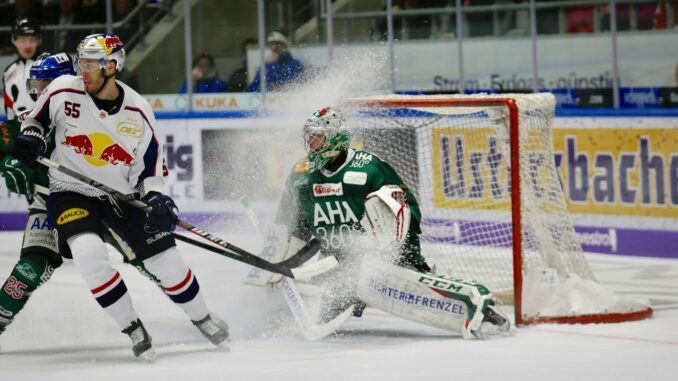
Ice hockey is one of the most widely followed in North America. The Stanley Cup is considered on a par with a “holy grail,” although the trophy has not been treasured as a relic, and athletes and fans are willing to do anything to win it.
In 1980, the New York Islanders team accidentally inaugurated the “playoff beard” ritual: each player cannot shave until the unit is eliminated or until the final victory.
The “bearded” New York Islanders won 4 consecutive Stanley Cups from 1980 to 1983; since then, the ritual has been taken up by all teams participating in the playoffs and has spread to other sports, such as football and basketball. The beard ritual symbolizes the importance of team unity and the reminder of what is at stake, even when looking in the mirror.
Detroit players’ strange ritual
On the other hand, in Detroit, Red Wings fans have a strange superstitious way of propitiating Stanley Cup victory: they throw octopuses. In 1952, brothers Pete and Jerry Cusimano, owners of a fish market, threw an octopus onto the ice before the start of the first playoff game to symbolize the eight wins needed to win the trophy; that year, the Red Wings won the Stanley Cup.
Since then, and regardless of whether more than eight games are required to win the Cup today, there has not been a playoff game played in Detroit in which an octopus shower didn’t happen; sometimes, you can even see it during the last regular season games as a good omen for qualifying for the post-season.
In an attempt to curb the “octopus shower” phenomenon, the Detroit franchise has unofficially adopted the ritual by having two giant fake octopuses, wearing Red Wings jerseys, come onto the field before the start of games symbolizing the 16 wins needed nowadays to win the Cup. Fans, however, still prefer the throwing of real octopuses.
How far do fans’ superstitions go?
Goalkeepers, such as Glen Hall and Darren Pang, had a rather unpleasant ritual of throwing up before the game. Still, they said, it facilitated concentration and allowed them to play better: throwing up before each match. On the other hand, Patrick Roy, one of the best NHL goalies, used to go out of his way to avoid going over the blue and red lines of the field, while he loved to talk to the goalposts that he declared to be his best “friends.”
Another moment closely followed by the most superstitious is the awarding of the winning teams of the Eastern and Western Conference; they are entitled to the Prince of Wales Trophy and the Clarence S. Campbell Bowl, respectively, but many players refuse to lift the trophies and touch them, as only the Stanley Cup deserves to be lifted.
Not to mention that by lifting another award, the Cup might get angry at the team in question deciding not to concede to it. Fans think the Cup is exceptionally touchy, as in the case of the New York Rangers: in 1940, the Rangers won the Stanley Cup, and because the mortgage on Madison Square Garden, the Rangers’ home facility, had just been paid off, the administrators burned its contract inside the Stanley: this “blasphemous” gesture is considered by Rangers fans to be the cause of the subsequent 54-year wait before seeing it won again.
Curious how it was not considered equally sacrilegious by “hockey” folklore to piss in it, as the players did instead to celebrate that same victory (see Stanley Cup). We can assume that the players, having won it while playing, had earned the right to abuse the Cup in any way: the facility administrators, not being part of the team, could not afford disrespectful gestures instead.
In addition to its superstitions and rituals, ice hockey has unwritten laws. In fact, hockey is a sport of physical solid contact, in that it is permissible to “charge,” within certain limits, the opponent in possession of the puck (i.e., the rubber puck); players, however, when they deem the charge “excessive,” set the record straight with the opponent in a fistfight.
The rules punish the brawl (usually a 2-5-minute penalty), and the players suffer removal from the ice. Still, the referees, until the situation becomes dangerous, let the athletes settle their scores in their way without intervening to separate them.
Sometimes things escalate, however, and the Detroit above Red Wings and Patrick Roy know something about this. In the 1995-1996 season, during a playoff game, Claude Lemieux of the Colorado Avalanche charged near the bench of Kris Draper of the Detroit Red Wings, who violently slammed his face against the fence as a result: the trauma was such that Draper underwent reconstructive facial surgery.
Colorado won the game and the series, so the teams would not meet again until the following season, but players, fans, and Detroit newspapers close to the Red Wings railed against Lemieux and swore revenge. The following year, revenge was staged in the last regular season game between the two teams held on Wednesday, March 26, 1997, in what is remembered as the “Brawl in Hockeytown” or even “Bloody Wednesday.”
Support Northern Colorado Journalism
Show your support for North Forty News by helping us produce more content. It's a kind and simple gesture that will help us continue to bring more content to you.
BONUS - Donors get a link in their receipt to sign up for our once-per-week instant text messaging alert. Get your e-copy of North Forty News the moment it is released!
Click to Donate
